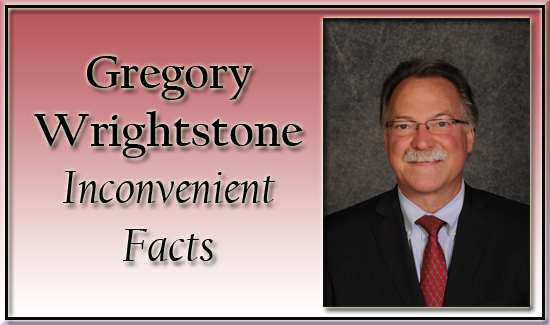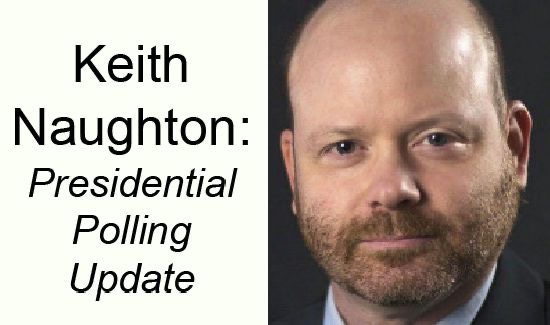(This article first appeared in Broad+Liberty.)
Somebody should tell Gov. Josh Shapiro that his state is doing very well environmentally. Overall, the weather has been getting better and agricultural production is up in Pennsylvania.
Nevertheless, he repeatedly attacks the producers and users of energy to address a supposed climate crisis. His administration is trying to keep Pennsylvania trapped in the Regional Greenhouse Gas Initiative (RGGI), which the Commonwealth Court ruled as an illegal tax. Recently, he proposed a new energy tax and the expansion of a program to force consumers to buy larger amounts of expensive and unreliable wind and solar power.
Shapiro’s angst may stem from predictions by the state Department of Environmental Protection that climate change induced by emissions of carbon dioxide would lead to extreme weather and environmental harm — including both floods and droughts — and would damage Pennsylvania’s $80 billion agricultural sector.
Yet, nothing could be further from the truth.
It is a fact that atmospheric carbon dioxide has increased since 1750 to 420 parts per million from 280. Most of that 50 percent increase is probably from CO2 emissions that began a steady rise with the Industrial Revolution and accelerated after World II because of vigorous economic growth.
However, almost nothing supports the popular claim that recent modest warming has been caused by carbon dioxide. In fact, geological evidence overwhelmingly indicates that this warming trend is simply another in a series of warming and cooling cycles operating since the end of the last glacial advance more than 10,000 years ago. Moreover, our current warming trend started more than 300 years ago, long before we began emitting CO2 in earnest in the mid-20th century.
To put the governor at ease, we turn to the National Oceanic and Atmospheric Administration’s U.S. Historic Climate Network. Even though the network’s temperature record is biased toward the global warming narrative by both corrupted and manipulated data, it still offers reassurance that Pennsylvania’s climate has been becoming more benign since at least 1895.
Over the past 130 years, Pennsylvania’s average temperature has increased about one-half a degree Fahrenheit. Considering that cold is up to 20 times as lethal as heat, warmth is a good thing for anybody familiar with the Keystone State’s winters. Average maximum temperature has remained unchanged and the percentage of days above 100 degrees has declined significantly — by more than half.
As for the claim of increasing drought, since 1895, the state’s average annual precipitation has increased to 45 inches from 40 and the severity of droughts has decreased slightly but steadily.
Neither has flooding become more of a problem since the beginning of the 20th century. In fact, numerous data points around the state show fewer floods over time.
For example, the flood crests for the decades of the 2000s and 2010s are about 60 percent that of the 1900s and 1910s for the Allegheny River at Franklin, Venango County. Similar declines in flooding were recorded for the Ohio River at Pittsburgh, the Susquehanna River at Williamsport and for Bucks County, where George Washington crossed the Delaware and famously experienced a particularly harsh Pennsylvania winter.
As for agricultural health, food production in Pennsylvania and around the world is up, partly because of a warmer climate, which has increased the U.S. growing season by more than two weeks and lessened the threat of killing frosts in the late spring and early autumn. Also contributing to better crop yields are the fertilization effect of more CO2 and the use of fertilizers derived from foolishly maligned fossil fuels. This boost in productivity has enabled farmers to support eight billion people, ten times the population of 300 years ago.
An overall greening of Earth that has been widely attributed to modern warming and high concentrations of atmospheric CO2 is unsurprisingly reflected in Penn’s woods. Since 1955, the state’s standing timber has increased fivefold. Worldwide, tree cover has grown by more than 2 million square kilometers, a seven percent increase.
So, with all the good news, why the pressure to increase energy prices and subsidize favored industries at a cost of billions of dollars? The purported answer is to quench the fever of an allegedly overheating planet.
Well, consider that the calculated theoretical heating that would be averted by 2100 if Pennsylvania eliminated all emissions of carbon dioxide would be 0.008 degrees Fahrenheit, an amount too small to measure.
Gov. Shapiro should heed the caution to first do no harm because his climate prescriptions are sure to damage the interests of people who need abundant, affordable energy.
Gregory Wrightstone, a Pennsylvania native, is a geologist; executive director of the CO2 Coalition, Arlington, Va., and author of “Inconvenient Facts: The Science That Al Gore Doesn’t Want You to Know” and “A Very Convenient Warming: How modest warming and more CO2 are benefiting humanity.”







